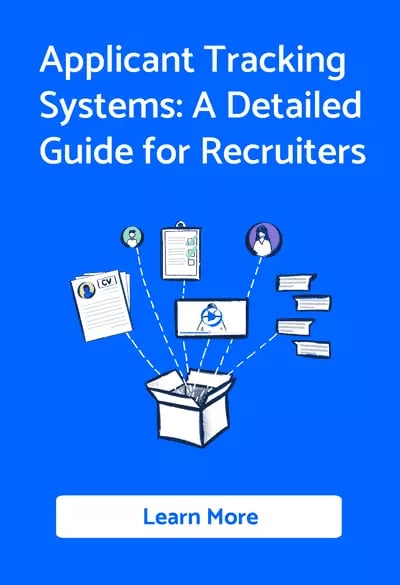A well-optimised sales pipeline is crucial for businesses looking to increase conversions, improve efficiency, and drive revenue growth. For small and medium-sized businesses (SMBs), having a streamlined sales process can be the difference between closing deals and losing opportunities. From lead generation to final conversion, every step of the pipeline needs careful attention to ensure that no opportunities are missed, and every prospect is guided through the buying process effectively.
In this article, we’ll break down actionable strategies to help you optimise your sales pipeline, close more deals, and improve overall business performance. Whether you're looking to shorten your sales cycle, improve lead qualification, or fine-tune your follow-up process, these insights will set you up for success.
For more guidance on improving your sales and hiring processes, check out GoHire’s guide to hiring top employees.
1. Understand your current sales pipeline
Before you can optimise your sales pipeline, it’s crucial to fully understand how it functions right now. A sales pipeline is the visual representation of where potential customers are in the buying journey, from first contact to closing the deal. Having a clear understanding of each stage, as well as the conversion rates between them, will help you pinpoint where bottlenecks and inefficiencies lie.
Evaluate key stages in your sales pipeline:
- Lead generation: How are leads coming into the pipeline? Are your marketing efforts bringing in high-quality leads?
- Lead qualification: How well are your leads being qualified? Are you wasting time on leads that don’t convert?
- Proposal and negotiation: Are you effectively handling objections, and is your proposal process quick and efficient?
- Closing the sale: Are there any barriers or delays when it comes to sealing the deal?
By conducting a thorough analysis of each stage, you can identify areas where prospects may be dropping off and understand where you need to focus your optimisation efforts.
For more tips on improving efficiency, explore GoHire’s guide on candidate sourcing strategies, which offers insights applicable to streamlining your sales processes too.
2. Improve lead qualification
Not all leads are created equal. One of the biggest causes of a slow or inefficient sales pipeline is spending too much time on unqualified leads. The better you qualify leads early in the pipeline, the more time your sales team can focus on prospects who are more likely to convert.
Key actions to improve lead qualification:
- Set clear criteria: Define what makes a lead qualified for your business. Consider factors such as budget, company size, industry, and readiness to buy.
- Implement lead scoring: Use a lead scoring system to rank leads based on their likelihood to convert. Leads that score higher on your criteria should be prioritised for follow-up.
- Use automation: Implement tools that automatically qualify leads based on their interactions with your business, such as engagement with emails, content downloads, or site visits. This will help identify warm leads earlier.
By improving how you qualify leads, you can increase the efficiency of your sales pipeline and ensure that your sales team spends their time on the most promising prospects.
For businesses that rely on hiring top sales talent, GoHire’s guide to ATS systems offers valuable insights on how automation can enhance both your hiring and lead qualification processes.
3. Shorten your sales cycle
A long sales cycle can negatively impact your cash flow and lead to a lower close rate. The more time a prospect spends in your sales pipeline, the greater the chance they might lose interest or choose a competitor. Optimising your pipeline to shorten the sales cycle is crucial for closing deals more quickly and efficiently.
Strategies to shorten your sales cycle:
- Identify bottlenecks: Review your sales process to identify where prospects are spending too much time. Is it in the proposal stage? The negotiation phase? Once you identify these bottlenecks, you can implement strategies to speed up these stages.
- Automate routine tasks: Use sales automation tools to streamline routine tasks like sending follow-up emails, scheduling meetings, or generating proposals. This reduces the amount of manual work required and keeps prospects moving through the pipeline.
- Provide faster responses: The quicker you respond to inquiries or follow-up with potential clients, the more likely they are to stay engaged. Implementing a CRM or communication platform that automates responses can ensure no lead is left waiting.
Reducing friction and speeding up decision-making can significantly improve your pipeline’s efficiency, allowing your team to close deals faster and handle more leads.
4. Track and analyse key metrics
To truly optimise your sales pipeline, it’s essential to track and analyse key performance metrics. These metrics will give you valuable insights into the health of your pipeline and help you make data-driven decisions to improve it.
Key metrics to track:
- Conversion rate: Measure the percentage of leads that move from one stage of the pipeline to the next. This will help you identify weak points in your process.
- Average deal size: Track the average revenue generated per closed deal. Understanding this metric helps you prioritise high-value deals and allocate resources effectively.
- Pipeline velocity: Calculate how quickly leads move through your sales pipeline. A faster pipeline velocity means that you’re closing deals more quickly, leading to higher overall revenue.
- Win rate: The percentage of deals your sales team successfully closes is a key indicator of how effective your pipeline is. A low win rate suggests issues with lead qualification, the proposal process, or negotiation tactics.
By regularly reviewing these metrics, you can continuously refine your pipeline, address underperforming areas, and ensure that you’re on track to meet your revenue goals.
For more advice on tracking the right metrics in hiring, check out GoHire’s guide on data-driven hiring, which offers useful parallels to tracking and optimising your sales pipeline.
5. Enhance follow-up strategies
Effective follow-up is essential to converting leads into customers. Many sales opportunities are lost due to poor or inconsistent follow-up. Prospects often need multiple touchpoints before making a decision, so having a robust follow-up strategy in place is critical.
Best practices for follow-up:
- Use multiple touchpoints: Don’t rely on just one channel for follow-up. Use a mix of emails, phone calls, and social media messages to stay in touch with leads.
- Automate where possible: Automating follow-up emails can ensure that no lead slips through the cracks. Tools like CRM systems can automatically send personalised follow-ups based on the prospect’s interactions with your business.
- Provide value in each interaction: Each follow-up should offer something valuable to the prospect, whether it’s a new piece of content, a case study, or a free consultation. This keeps them engaged and moving closer to making a decision.
For more strategies on follow-up messaging, explore GoHire’s guide to powerful LinkedIn messages for networking to learn how to craft messages that get responses.
6. Regularly clean and update your sales pipeline
An optimised sales pipeline needs to be regularly maintained. Over time, leads that are no longer relevant or opportunities that have gone cold can clog your pipeline, slowing down your sales process. Regularly cleaning and updating your pipeline will ensure that your sales team is focusing on the most promising prospects.
Steps to clean your pipeline:
- Remove dead leads: Regularly review your pipeline to identify leads that are no longer responsive or have expressed no interest in moving forward. These leads should either be removed or deprioritised.
- Re-engage cold leads: For leads that have gone cold but haven’t explicitly opted out, consider sending a re-engagement campaign. This could be a special offer, a new piece of content, or simply checking in to see if they’re still interested.
- Update lead status: Ensure that all leads are categorised correctly and that their status in the pipeline is up to date. This helps your team stay organised and focus on active deals.
Maintaining a clean and updated pipeline will increase efficiency and ensure that your sales team is focusing on the right opportunities.
7. Provide ongoing training for your sales team
An optimised pipeline is only as effective as the team managing it. Regular training and development are essential for ensuring that your sales team is equipped with the skills and knowledge they need to navigate the pipeline efficiently and close more deals.
Focus areas for training:
- Sales techniques: Keep your team up to date on the latest sales techniques, including consultative selling, negotiation skills, and closing strategies.
- Product knowledge: Make sure your team fully understands your product or service so they can effectively communicate its value to prospects.
- CRM and automation tools: Train your team to use CRM systems and sales automation tools effectively to track leads, follow up, and manage the sales pipeline.
Ongoing training will ensure that your team stays sharp and capable of handling the challenges of a fast-moving sales pipeline.
For more tips on building a high-performing team, explore GoHire’s guide on hiring top talent.
How can I shorten my sales cycle?
To shorten your sales cycle, identify bottlenecks, automate repetitive tasks, and maintain fast response times. Streamlining the proposal and negotiation phases can also help speed up the process.
What is lead scoring, and how can it help optimise my pipeline?
Lead scoring ranks leads based on their likelihood to convert, allowing your sales team to focus on the most promising prospects. This improves efficiency by prioritising higher-value leads.
What metrics should I track to optimise my sales pipeline?
Track key metrics like conversion rate, pipeline velocity, win rate, and average deal size. These metrics give you insights into how well your pipeline is functioning and where improvements are needed.
How can I automate my sales pipeline?
Use CRM and sales automation tools to automate tasks like lead scoring, follow-up emails, and scheduling meetings. This helps keep the pipeline moving without manual intervention.
How often should I clean my sales pipeline?
Regularly clean your sales pipeline every quarter to remove dead leads, re-engage cold prospects, and update lead statuses. This keeps your pipeline efficient and focused on active deals.






